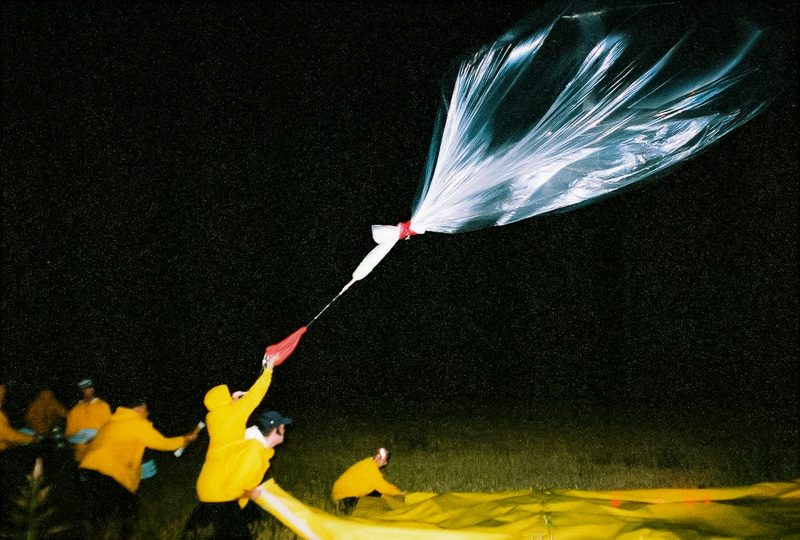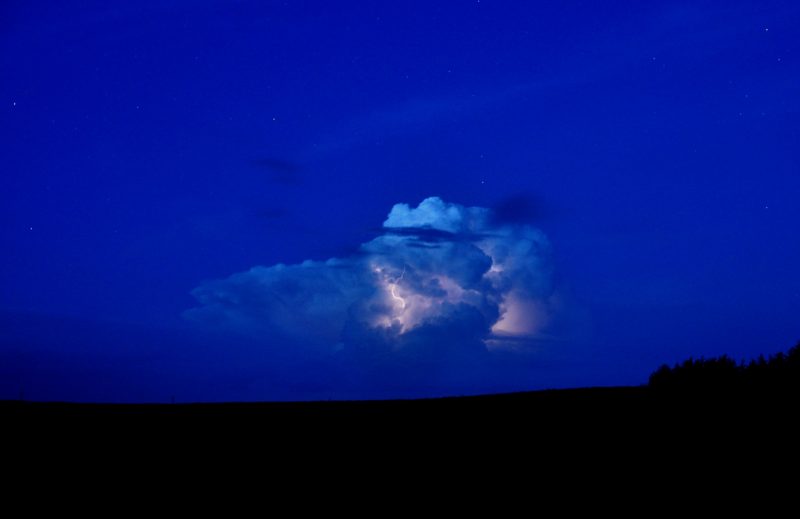
This summer, more than 20 NOAA scientists will stay up late to learn why some thunderstorms form and grow at night, without the energy from the sun’s heat. They will be participating in the Plains Elevated Convection At Night (PECAN), a large, intensive field campaign to collect data before and during nighttime thunderstorms in the western Great Plains from June 1 to July 15.
PECAN researchers will deploy instrumented aircraft, ground-based instruments, mobile radars, and weather balloons to learn what triggers these storms, how the atmosphere supports their lifecycle, and how they impact lives, property, agriculture and the water budget in the region. Meteorologists believe these targeted observations will build understanding and ultimately improve forecasts of these sometimes damaging storms.

“Large nighttime thunderstorms are an essential source of summer rain for crops, but also produce widespread and potentially hazardous severe weather, excessive rainfall, flash flooding, and unusually frequent cloud-to-ground lightning,” said Conrad Ziegler, a research meteorologist at the NOAA National Severe Storms Laboratory and principal scientist for PECAN. “Weather forecast models often struggle to accurately account for these. The PECAN field campaign will provide us with valuable insights—and improve our ability to save lives and property through more accurate forecasts.”
The PECAN field campaign will involve scientists, students, and support staff from eight research laboratories and 14 universities. The $13.5 million project is largely funded by the National Science Foundation (NSF), which contributed $10.6 million. Additional support is provided by NOAA, NASA, and the U.S. Department of Energy.
Nighttime storm triggers
Once the sun goes down, the Earth and its lower atmosphere usually loses heat and becomes more stable, an environment not so favorable for supporting thunderstorms. In the Great Plains, however, many summer storms form after sunset, and sometimes without an obvious trigger.
PECAN scientists are interested in large complexes of thunderstorms called Mesoscale Convective Systems that can grow overnight, last for hours and often produce severe and hazardous weather. They will investigate how a low-level river of air triggers thunderstorms and supports storm evolution, what causes storms to grow into MCSs, and how MCSs respond to the surrounding environment.
In addition, PECAN researchers will test their hypotheses about how deep waves in the atmosphere form and ripple across the plains, like what happens with water when a stone is thrown in a pond, causing new storms to form after sunset. One type of atmospheric ripple is called a “bore.” Thunderstorms can create bores, but bores can also cause a thunderstorm to suddenly intensify. PECAN is the first modern campaign to study the role of bores and how they trigger and support Mesoscale Convective Systems.
Armada of instruments
More than 20 NOAA researchers and students will be responsible for gathering data with multiple instruments including the NOAA-X-Pol, a dual-pol mobile radar, two mobile balloon launch vehicles, and two “mobile mesonet” vehicles equipped with weather instruments. New to the fleet is the Collaborative Lower Atmosphere Mobile Profiling System (CLAMPS) designed by NSSL researchers to meet many of NOAA’s and its National Weather Service’s needs for lower atmosphere temperature, humidity and wind profiles. Additionally, one of the three aircraft participating in PECAN will be a NOAA Lockheed WP-3D Orion aircraft, best known for its hurricane hunting missions.
Unique to the experiment is an observation strategy that uses PECAN Integrated Sounding Array (PISA) stations to provide temperature, humidity, and wind profiles about every five minutes. The Department of Energy will provide six out of the eight ground-based upward-looking infrared spectrometer instruments. Dave Turner, NSSL scientist and PECAN steering committee member, will coordinate their operation.
Deploying in the dark
The campaign is based in Hays, Kansas, and will begin each day at 8 a.m. CDT. A team of meteorologists, including retired forecasters from NOAA’s Storm Prediction Center, will work on a forecast for the upcoming night. At 3 p.m., scientists will use the forecast to determine where across northern Oklahoma, central Kansas, or south-central Nebraska to deploy their mobile resources. Teams will then ferry the instruments to the target area, set up, and collect data from dusk until after midnight. When the observation period is complete, they will ferry the instruments back to the base in Hays. A better understanding of these storms will have relevance for areas beyond the Great Plains, because clustered nighttime thunderstorms are common in various regions scattered across the globe.



